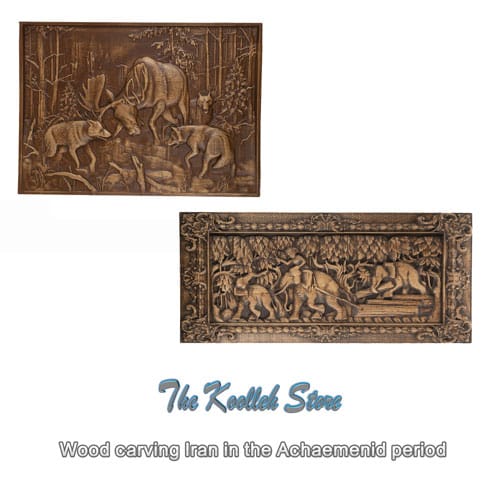Wood carving Iran in the Achaemenid period

The Achaemenid era coincides with the reign of Cyrus the Great. According to Herodotus, the Achaemenids were from the Pasargadae tribe who settled in Persia and were ruled by the Achaemenids.
After the defeat of the Medes, Cyrus established the Persian Empire in Pasargadae. During the heyday of Iranian history, the Achaemenid dynasty sought to build royal cities, and to test the great architectural and architectural plans and programs that were in fact the epitome of their power, dominance, and greatness, artists and craftsmen were tested throughout their vast realms and empires. They searched for what they needed; During this period, the use of wooden products of the imperial countries was done well, as the wooden columns of the Lebanese cedar from the west, the decoration of the walls from Ethiopia and other materials from different parts of the imperial countries were collected; More than a hundred wooden beams have been used in the construction of Persepolis, and the surviving motifs show that they used carved wood to build the royal bed at the time, indicating that in such a brilliant period. Undoubtedly, woodcarving has been highly valued.
How could they have been able to create such a valuable work on stone in a country of such greatness, or to have mastered the art of carpentry so well, but not to be able to carve on wood? “During the excavations of Persepolis in 1344, part of the statue of a bird, apparently a hunting bird, including a knee and claw, was found, which was allegedly made of white wood and other excellent types of wood and carved.”
The existence of this work indicates the progress of the art of carving in that era. Also, the stone heels on the doors indicate the existence of huge wooden doors, which unfortunately have no traces left. Since the art of woodcarving is closely related to ivory, bone, and shellfish carving, as well as the art of plastering, it is worthwhile to briefly describe such works in this article, and to examine the carvings performed on some of these works. Get.
Examples of carved artifacts from the first millennium BC, the Achaemenid era, include excellent specimens of ivory and bone in the Shush, Persepolis, and Hasanlu regions, some of which are now housed in the Museum of Ancient Iran. Parts of a relief carved on the bone can also be seen. This work is one of the most delicate carved works, which is decorated with great skill, so that its clothes and shoes are artistically and finally carefully and patiently made, and the toes are made and polished with a very powerful and precise fit.
The work, along with a prominent Sphinx relief and winged lion from Susa, are all of extraordinary elegance. Other artifacts from the same era in the Museum of Ancient Iran include a bony relief, which has unfortunately been largely destroyed. The remaining fragments show the elegance and precision with which it was used. The hand on the edge of the vessel and the decoration of the vessel itself have created such proportions with parallel lines that, after more than two thousand years of its construction, it amazes every viewer; Such works well illustrate the greatness of the carvings of that time. What is certain is that the source of all the excavations carried out on stone, ivory, bone, shell, etc. was the same wood. Other exquisite and valuable works of this period include the Sardis Aji related to the Hasanlu region, which is housed in the Museum of Ancient Iran. This work rightly tells of the masterpieces of ivory carving in its time.

